
Best gluten-free bread recipe
This is hands down the best gluten-free bread recipe I have ever made. It is nutritious, high in protein, fibre and best of all, it’s fool-proof. Most of you might know that I was born and raised in Germany and only moved to Ireland a couple of years ago. Whenever people ask me if there is something that I miss about Germany, I can certainly say it’s the bakeries. Germans seem to have a sheer endless variety of bread with most of them being much moister and denser than the typical Irish white pan bread. Personally, I find it really hard to buy “real” bread nowadays, many loafs you find in the supermarkets have a longer ingredient list than my shopping list.
Have you ever asked yourself why the bread from the supermarkets lasts so much longer than the traditionally baked bread? The answer is very simple, it is full of additives and preservatives to make it last as long as possible. You might say: “Well, but it’s so convenient to get and I am not a great baker anyway” but this “best gluten-free bread recipe” is as easy as it gets, no kneading or proofing and then, even more, kneading is required. You simply mix all the ingredients together, let it soak overnight and bake it the next day.
Usually, I slice up the entire loaf and freeze it in portions of 4 slices. Whenever I am craving a sandwich I take one of the little bags out of the freezer and defrost it in the toaster. You will notice the lovely, nutty smell of roasted seeds starting to fill your kitchen. It tastes simply divine, no matter if you prefer sweet or savoury toppings both work well.
The difference between wholemeal and refined white flour
Would you know the difference between 100% wholemeal and a whole grain bread? You probably head to the supermarket thinking, I will do myself some good by buying whole grain bread instead of white bread but you might be surprised if you actually check the label.
A bread labelled as whole grain bread can still be mainly manufactured with white flour. It can be referred to as a whole grain bread simply because it may contain a few e.g. sunflower seeds. On the other hand, a company can only call a bread a 100 % wholemeal bread if it has been exactly made from a 100 % wholemeal flour.
Stoneground flour contains far more nutrients and fibre than white flour. During the refining process, white flour gets stripped off all its goodness. In many countries including Ireland, it’s required by law to fortify refined flours with vitamins and minerals but don’t be fooled, you will still be missing out on important nutrients and fibre. Most commercial white flour in the US is bleached, using chemicals like acetone peroxide, chlorine, and benzoyl peroxide.
Everybody seems to be in love with sourdough these days but yet again check the label carefully, you might be surprised to find out that in certain cases only sourdough flavour has been added. Using commercial yeast instead of real sourdough helps the manufacturer to cut the proofing time from 8-24 hours to a couple of minutes. Many people experience problems with bread not because they are intolerant to gluten but because of the way, it’s manufactured. Buying your bread in a bakery doesn’t necessarily mean that it has been manufactured the traditional way, ask your baker to be sure.
A traditional sourdough bread like this Sourdough Rye Bread Recipe will only ever call for 3 simple ingredients, water, flour and salt, no nasty commercial yeast, additives or preservatives required. Learn how to make your own sourdough starter, it’s so simple.
Like it? Pin it!
Is this gluten-free bread really healthy?
The simple answer, unless you are being intolerant to any of the ingredients is, yes. You might have noticed that this recipe isn’t calling for any flour but how is this possible you might ask. The answer is psyllium husk. Psyllium husk can absorb 10- times its weight in water and therefore functions perfectly as a binder. In case you have never heard about this fibre, it is a real multi-talent, it may help you to:
- to reduce cholesterol levels
- aid digestion and weight loss
- alleviate diarrhoea and constipation.
Many high protein breads use a lot of eggs which rules them out for vegans, I’m delighted to inform you that this “best gluten-free bread recipe” is fully vegan.
Feel free to experiment with different ingredients to adjust it to your own liking, as long as you stick to the measurements you should be fine.
Your turn
Are you baking your own bread and which one is your favourite? I’m looking forward to reading your comments.
For more updates follow me on Facebook, Twitter, Instagram, Pinterest or subscribe to my YouTube channel!
Best Gluten-Free Bread Recipe
Ingredients
- 3/4 cup sunflower seeds
- 1/4 cup pumpkin seeds
- ½ cup ground flaxseeds
- ½ cup hazelnuts or almonds
- 1 ½ cups rolled oats gluten-free if required
- 2 tablespoons chia seeds
- 4 tablespoons psyllium husk 3 tablespoons if using psyllium husk powder
- 1 teaspoon Salt
- 1 tablespoon maple syrup for sugar-free diets, use a pinch of stevia
- 3 tablespoons coconut oil melted
- 1 ½ cups water
Instructions
- In a medium-sized bowl, combine all the dry ingredients. Whisk together the maple syrup, melted coconut oil and water in a measuring jug.
- Add the wet ingredients to the dry ingredients and stir until well-combined. If you have the feeling that the dough is too thick for stirring simply add another 1-2 teaspoons of water.
- Pour the mixture into a greased and parchment paper-lined loaf tin and let soak for at least 2 hours or even better overnight.
- Preheat the oven to 350°F/175°C.
- Place the loaf pan in the oven on the middle rack, and bake for 20 minutes. Remove bread from the loaf pan, place it upside down directly on the rack and bake for another 30-40 minutes. The bread is done when it sounds hollow when you tap it.
Nutrition
This recipe has been adapted from The Life-Changing Loaf of bread which was created by nutritionist Sarah Britton.
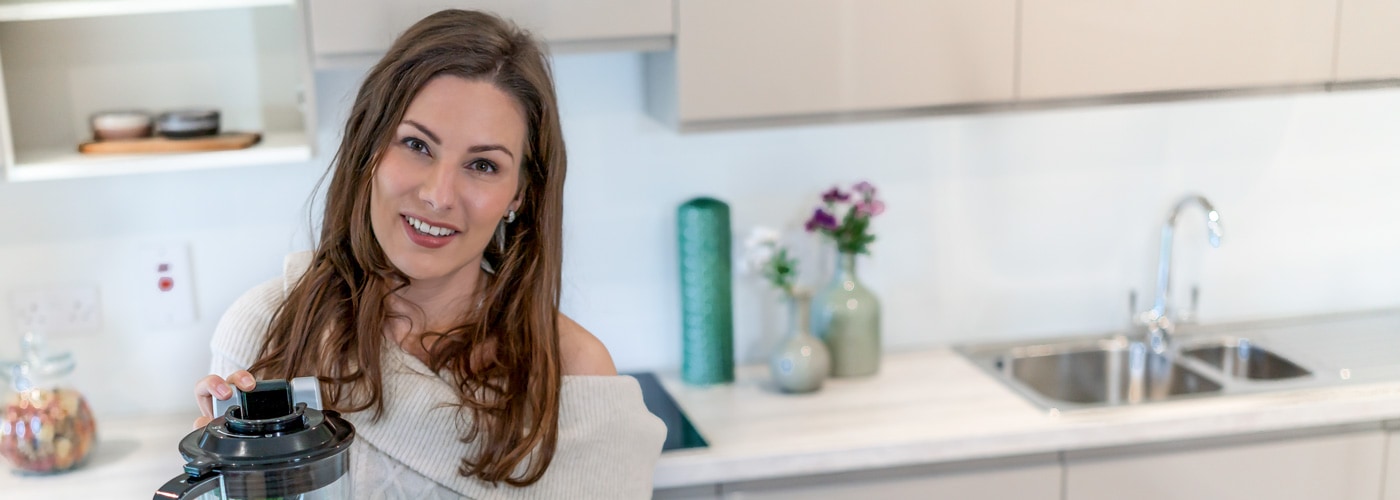
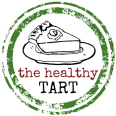
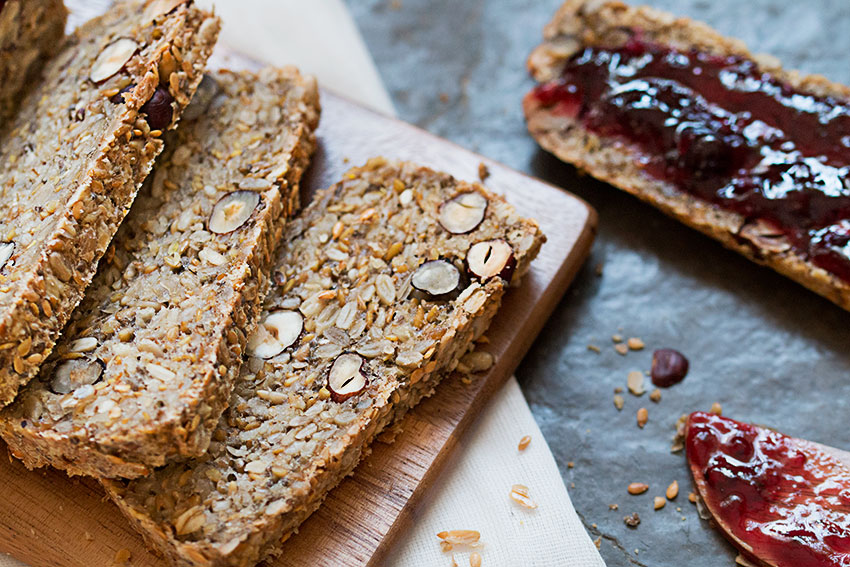
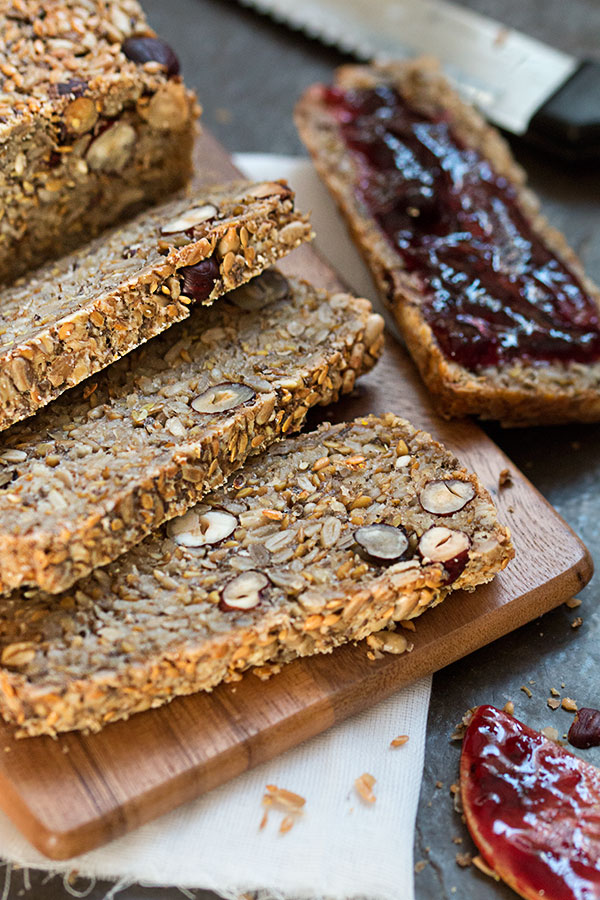
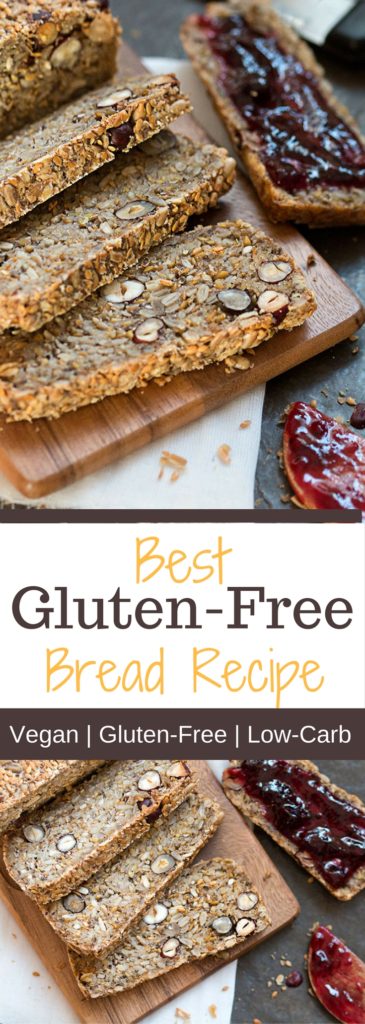
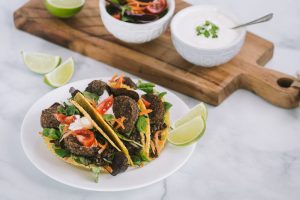
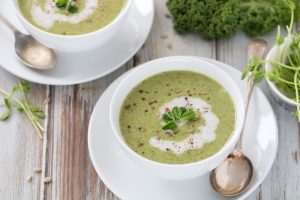
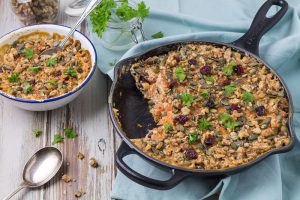
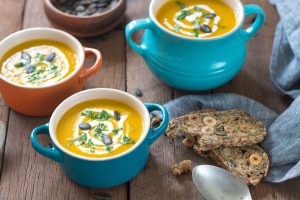
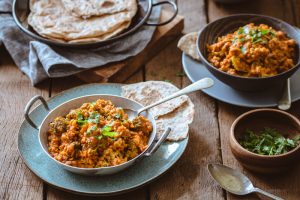
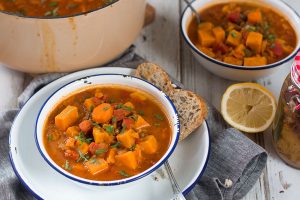
Hi, just made the bread. Can’t wait to see how it turns out.
Hi Jane, that’s great. I’m looking forward to finding out how you like it, hope you will enjoy it as much as I do.
Oats are NOT Gluten free ?
Hello Jillian,
according to the University of Chicago Celiac Disease Center, yes — oats are technically gluten-free since they aren’t a type of wheat, barley or rye grain, the three groups of whole grains that naturally contain the protein gluten. Instead of containing gluten, oats actually have a protein called avenins.
Avenin is a protein similar to gluten. However, research has shown that most people with coeliac disease can safely eat avenin.
Problems can occur if oats are produced in the same place as wheat, barley and rye, as the oats can become contaminated with these other grains.
Only oats which are uncontaminated can be eaten by people with coeliac disease.
Usually, I write gluten-free oats in my recipes but for some reason, I must have forgotten to mention it in this recipe.
I amended it so that it won’t cause any confusion, thanks for pointing this out, have a great day.
Hi,
Your GF loaf looks amazing!
Can you recommend a substitute for the GF rolled oats
as I cannot seem to tolerate oats.
Thank you I look forward to hearing from you soon.
cheers
Sally
Hi Sally,
thank you for your comment, I haven’t tried it myself yet but I would try to substitute it with quinoa or rolled quinoa would be even better if you can source it. Buckwheat groats might be another option, let me know what you went for, I would love to find out how it turns out. Have a great weekend. 🙂
Must i use coconut oil.
Hi Sue, the advantage of coconut oil is that it goes solid at room temperature, which makes the bread less crumbly. I haven’t tried it with any other oil, but feel free to give it a shot 🙂
Actually, Eva, the melting temp of coconut Oil is 75*F, so in summer my room is much warmer than that, LOL.
When allowing to let dough “soak”- is it at room temp or in fridge??
Hi Jennifer,
I usually soak it at room temperature, let me know how it turned out. Have a great day:-)
What could I use aside from psyllium husks and powder? I’m not allergic to eggs. All the rest looks so delicious. Thank you ?
Hi Jaime,
that could be a tricky one, I wouldn’t use eggs that have been sitting outside overnight but you could try finely milled flax or chia seeds instead.
I haven’t tested it but I could imagine that it would work if you mix it with the water and let it sit for 10 minutes before you add it to the dough.
Let me know what you went for and how it turned out. Have a great weekend. 🙂
You bread looks delicious. I am supposed to avoid flax seed. Is there something I could substitute for that? How about chia seed?
Hi Connie, thanks a lot. Even though I have never tried to replace it with Chia seeds I assume that it would work. It will look different but you should be able to achieve a similar result. If you do try it please let me know how it turned out. 🙂
Hi Eva,
do you think this bread would be work out the same if I grind up all the seeds before letting them soak overnight? My husband doesn’t like seedy bread so I try to disguise them!
Thanks
Hi Susan,
not sure if this is the right choice of bread if your husband doesn’t like seeds. 😉 I have never tried this, but I think it could work, the texture will most likely be denser though.
If you try it please let me know how it turned out. Have a great day.
x Eva
HI: Followed recipe and bread has been resting in loaf pan all night. This morning it feels a tad heavy but I’ll give it a go. I wondered if I should get it out again and mix it with more water (but did the extra 2 tsps) or yeast or something….?? I’ll let you know 🙂
Hi Kay,
thanks for getting in touch, the bread is supposed to soak overnight, this is different to the proofing process of regular bread, it won’t rise and isn’t supposed to, please don’t add yeast.
According to your description, it sounds just fine to me. Please let me know how it turned out. 🙂
I replaced 1/2 cup of the water with kefir and let soak overnight. This added a sourdough element to the flavor of the bread. I imagine the longer the soak the more intense the sour.
Hi, thanks for taking the time to comment. This sounds interesting I have never tried it, please let me know how it turned out.
The bread turned out really good. It was only slightly sour seeing as I only soaked it for 8 hours.
Next time I am going to let it soak for 24hr+.
Bread came out great!
This bread is AWESOME! I have made it at least a dozen times, without fail. It is super simple and easy. I’ve shared the bread (along with your website) with numerous people…everyone loves it!
The loaf is so forgiving…after the 20 minute bake, I take it out of loaf pan, flip it over, set my oven for 45 mins and pop it back in. Then I just forget about it and, when the oven turns off after 45 mins, leave it in until the oven cools.
Also, after putting “dough” into pan, I’ve experimented with a variety of different lengths of time to leave it rest. My experience? Sure, overnight is great (and maybe best?) but I’ve achieved bread awesomeness after letting it rest as little as a few hours. I say, don’t sweat it too much.
Favorite way to eat? I love it for breakfast or lunch, topped with smashed avocado, soft-boiled egg slices, and some red onion.
Great recipe Eva, and great site!
Hi just about to make the recipe but it’s my first time making bread and I was wondering what you meant by ‘soak’ the mixture? Thanks
Hi Joe,
that’s brilliant, by saying, let soak for at least 2 hours or even better overnight, I mean, just let it sit allowing for the ingredients to soak in the water.
By soaking, you are breaking down the phytic acid so it can be absorbed properly. Nuts have high amounts of enzymes inhibitors which is why unsoaked nuts are hard to digest. Soaking nuts can neutralize the enzymes allowing for proper digestion. I hope that this answer helped. 🙂
Hi, I tried this recipe today and it was super! I used large flake oats and really liked that I didn’t need oat flour or to grind my oats into oat flour. I’ve been looking for a healthy wheat-free recipe for years and I’ve tried a number of paleo and gluten free recipes. This recipe is a keeper and I will continue to make it regularly. Yay! Finally, my search for a good recipe is over! And it’s husband approved. He said he would eat this bread everyday. I will perhaps experiment with omitting the almonds I used as the bread has a lot of additions, which I didn’t mind but hubby commented he’d prefer it less seedy/nutty.
Hi Ivy, I am delighted that you and your husband enjoy the bread, the bread is really forgiving, you can swap any nuts and seeds to your liking as long as you roughly stick to the ratios. Enjoy playing around.
I also decided to soak the bread mixture for 4 hours. I often soak my almond for about 4 hours before eating them so decided to try this with the bread mixture and it was a good decision.
What size bread pan do you use?
Hi Sue, I use a slim and tall 2 lbs pan but you could also use a 1 lb pan.
Hi do the hazelnuts/almonds need to be ground?
Cant wait to try this
Hi Jo, thanks for getting in touch, no need to grind either of them, enjoy. ~Eva
Hi, should it be slivered almonds? I bought whole ones but I’m sure they are too big…
Hi Merlynn, whole almonds are what I use, once you cut the bread they become thin slices, but if you prefer slivered that’s absolutely fine too.
Is it possible to put this in a bread maker? Any suggestions on what must be altered to make it in a bread maker?
Hi Bela, unfortunately, I am not familiar with breadmakers and their settings, I don’t think that you can simply add all the ingredients and let it mix them, but you can probably just use a program that will bake it for the recommended amount of time. Sorry, that I couldn’t be of more help, but maybe somebody else on here will be able to help. ~Eva
I have made this a few times, and have been very surprised at the texture and taste which works really well, only problem I had was with the nuts so I tried without the nuts and pulsing the pumpkin and sunflower seeds, I inadvertently forgot to add the coconut oil 🙁 but this turned out quiet well as it is a crisper texture and closer to a plainer taste, maybe the sunflower seeds have enough oil? which I think is better when you add the foods.
Jim 🙂
Hi! Your recipe looks amazing, it’s exactly what I’ve been looking for! Unfortunately, my oven is not working anymore. Do you think it is possible if I try to make it on stove top using a pan (essen style)?
Thanks!
Hi Augustina, thank you for your question, I have never tried this, but I wouldn’t recommend it. The heat won’t be distributed evenly from all sides, you will probably end up with a burned bottom and chewy middle and top. Regards Eva
Hi! Eva , i am very excited about the recipe and i am definitely going to try it.
I am allergic to coconut products, can i use olive oil as a substitute?
Hi Bontle, one of the differences between olive oil and coconut oil is that coconut oil turns solid at room temperature which helps to give the bread more stability. I haven’t tried it with olive oil but I think it would work too. Please let me know how it turned out if you try it. Regards Eva
I’m surprised that you recommend baking flax seeds as it will become harmful. I would strongly suggest that anything with high omega 3 content shouldn’t be heated
Hi Abelha, thank you for your comment. You are totally right if you are suggesting that flax oil shouldn’t be heated because it oxidises very quickly, but whole flaxseeds behave very differently. If you want to learn more about this please have a quick look at this article here http://whfoods.org/genpage.php?tname=dailytip&dbid=18
So is it better to use them whole instead of grinding the flax seeds?
Hi Heather, both ways will work. 🙂
Hi, this is my first attempt at making this bread — I’m so excited! I just got done mixing everything and filling my bread pan — is the batter supposed to be pretty thick at this stage? It’s the texture of thick oatmeal, like when the oats soak up all the water. It’s definitely wet, so I hope this is enough liquid to soak all the seeds? It’s just not liquid-y.
Hi Kayla, yes, it sounds like everything is correct. When I say liquid-y I mean it’s more liquid than regular dough that you could knead by hand.
I love this recipe and can’t wait to try but I’m not sure what you mean when you say “soak” the bread!?? Sorry lol
Hi Brenda, by soak I mean giving the seeds time to absorb the liquid. I hope this helps.
Made bread and LOVE IT! Thank you! I followed to letter and let it sit 2 hours – perfect! Reminds me of bread in Germany!
Hugs from Annapolis, MD
Hi Laurie, I am delighted to hear that you love the bread. Thank you for taking the time to let me know. Eva xx
I made this but didn’t have all the sunflower seeds and pepitas so I just added more almond meal. It tastes better the next day for some reason?! I find the texture really lovely, kind of cake like (yum). It’s nice spread with butter and honey!
Eva, this bread is amazing! Its so easy to make and tastes great. I’m wondering if there is a way to make the bread taller because I find since its not as big as store bought bread its hard to use for sandwiches because not a lot fits on it. Can I just double the batch but bake it in the same size loaf pan and how much longer would it have to bake for?
I made this bread and it turned out wonderfully! Totally recommended.
Came out better than I was expecting! Very nutritious. Tastes like nuts and seeds :). I was short on flax so used some hemp hearts – great substitution and extremely nutritious. I only had quick GF oats which I think helps the texture of this bread, but I would have liked rolled oats. Had to add lots of extra water. I used part almost milk for the water. HINT – use room temp liquids! Or even warmed a little as my coconut oil hardened. I used hot water for the extra liquid which helped. This would be a great mid-morning snack, too.